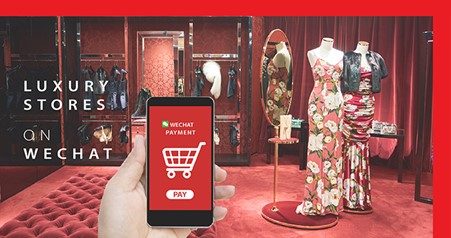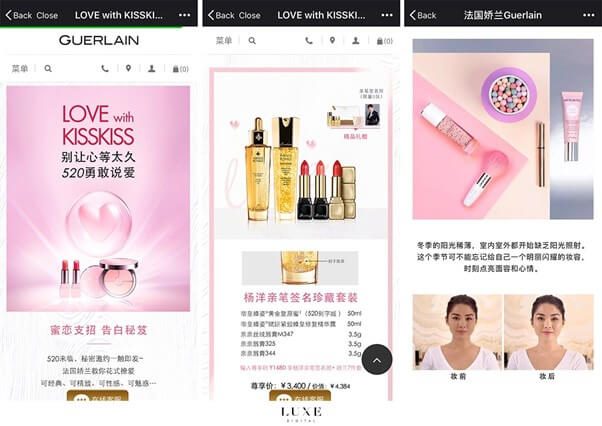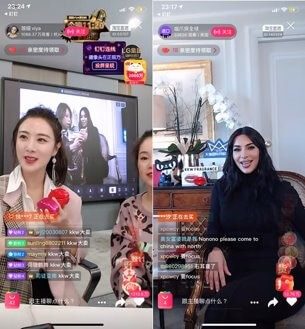As the world's largest consumer market for luxury goods, China is becoming a real target for Western luxury brands. Nevertheless, this gigantic market has its own peculiarities with which brands need to familiarize themselves.
The figures for China's luxury goods market are staggering!
One thing is certain: no country in the world can compete with China's thirst for luxury. In 2020, China accounted for 35% of global sales of luxury goods1. Clothing, jewelry and, in particular, beauty are key sectors of the Chinese luxury market. Among all the titles awarded to this immense country, China is the leading buyer of lipsticks: more than one lipstick in four is exported there, according to a study by the Fédération des Entreprises de la Beauté.
Added to this is the fact that the majority of Chinese luxury consumers are young: 80% are under452. They represent an audience that Western brands must conquer at all costs, for it is on their shoulders that the main opportunities for sales and growth lie... but how do you capture their attention and make them want to buy?
Young Chinese people have a particularly high propensity to consume via the Internet. Indeed, mobile commerce in China is the largest in the world: 61% of online sales are made via mobile applications3. WeChat, the most widely used mobile application in China - with over 1 billion monthly active users - seems to be the key to success!
Western luxury brands conquer WeChat
Luxury and e-commerce undoubtedly go hand in hand, provided you use the right platforms. So, if you want to enter the Chinese market, don't rush to Instagram, Pinterest and other Western platforms. As the Chinese have limited access rights to Western applications, they are more active on local social networks.
WeChat, the mobile application most used by the Chinese, doesn't go unnoticed. In the space of ten years, the world's best-known Chinese application has become a way of life. Pay bills, chat with friends and family, track Covid-19 cases, buy a plane ticket, book a table in a restaurant, go shopping... A real all-purpose app!

Initially, WeChat was just an app used for its messaging system, but since the creation of mini-programs in 2017, the platform has become a real e-commerce platform. WeChat mini-programs are defined as online stores. These mini-shops represent a highly appreciated vector: 95% of brands present online have their mini-program4; or if you prefer, there are over 20 million brand accounts on the app! This strategy has doubled the number of transactions made on the platform - 205 billion euros in cumulative transactions over the year5.
Western luxury brands work hand in hand with WeChat to innovate together

With an intimate and more social side, brands like Dior and Yves Saint Laurent are not hesitating to launch on WeChat: Dior has designed a limited edition of its iconic Lady Dior Small bag in partnership with WeChat. It was sold on the platform for a limited time and in limited quantities to mark Chinese Valentine's Day. This innovation has become the best in the industry. As for Yves Saint Laurent, the brand created an interactive game to stimulate consumer engagement. A "numbers game" was developed to predict participants' lucky numbers. They can obtain their number after entering their date of birth.

In this way, customers can access their offers directly via the WeChat platform, without having to change browsers or download another application. A host of other possibilities are opening up for Western brands: the opportunity to develop loyalty cards, organize live streamingcollaborate with influencers, known as KOLs (Key Opinion Leaders) in China. WeChat also enables brands to collect data that can be used to improve their customer relations strategy.
China and its many opportunities have nothing left to prove. Unsurprisingly, the growth of the Chinese luxury market is not about to stop: by 2025, 74% of the luxury market's growth will be driven by the Chinese population, 50% of which will be made at home, not abroad6. This represents a major challenge for Western brands, who will have to adapt to the standards of the Chinese market.
By Léa Veryepe
--------
Sources :
- 1EricBriones (2021), Luxury and Resilience: The keys to bouncing back from crises
- 2/3GMAGentlemen Marketing Agency, Luxury in China
- 4L'DNA des Tendances (2020), Why you should take a closer look at WeChat
- 5AMF, Market and risk mapping
- 6BCG(2019)


